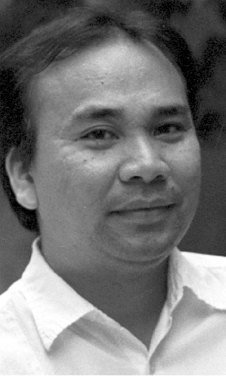
Jobers Bersales
Yesterday marked the 74th anniversary of the execution of Recrido T. Estrella, then a brevet Lieutenant Colonel who was acting head of the Cebu Area Command (CAC), the heroic guerrilla outfit in Cebu during World War II. CAC’s chief, Col. James Cushing was in Negros to confer with an agent sent by Gen. Douglas MacArthur in the interim, which would announce the general’s recognition of the CAC.
In his absence, Estrella was appointed to oversee the southern sector of CAC and find ways to connect with its northern counterpart led by Lt. Col. Harry Fenton (formerly Feinstein) the feared, unpopular and once-feisty anti-Japanese radio manager of KzRC, Cebu’s lone broadcast station housed on top the Pedro Gotiaoco Building prior to the Japanese invasion of Cebu on April 10, 1942.
Estrella had disregarded the advise of lower officers as well as that of Cushing not to execute the erratic and feared Fenton, and to hold him prisoner until the end of the war. Instead, Estrella put Fenton on trial and ordered his execution on September 16, 1943.
This was one of the charges against him in the General Court Martial that decided his fate barely a day after New Year’s Day 1944.
The other was the heavier accusation of his connivance, or as the typewritten confidential report now available to the public states, “his parley with the enemy.”
This and other voluminous records, including the roster of nearly 10,000 guerrilla officers and members of the formidable Cebu Area Command, as well as its history and list of battles and skirmishes against the enemy are now available for everyone to access via the Internet, a noble project of the Philippine Veterans Affairs Office (PVAO).
Among those records is the instantly revealing fact that the Chinese in Cebu had contributed to the guerrilla movement in the person of Go Siong Mit, who, as the CAC archival records show, was belatedly recognized in 1948 as a legitimate officer in the troop service headquarters of the Cebu Area Command, with the rank of 2nd Lieutenant in lieu of the originally-requested rank of Captain. Before and after the war, he had been manager of Go Occo Inc. While I cannot be certain as of the moment, I believe he must have been one of the sons of Go Occo in the firm that was later renamed Go Occo and Sons, one of the most prominent pre-war corporations that survived into the present on Magallanes Street.
Known as Pete to friends, there is nothing else written on the document requesting Go Siong Mit’s inclusion as a high official of the guerrillas.
Neither is there a specification of his work, but one suspects he may have contributed the resources of the Go Occo firm and other Chinese-owned businesses to help the guerrilla movement.
This would have been very dangerous work, which explains why his name is never mentioned in war records of the CAC and appears only in the early post-war period.
To be sure, there was a pro-Japanese Chinese Association of Cebu, which kept tabs on the Chinese community in the city and the province.
Go Siong Mit must have walked the tightrope, otherwise he would have been incarcerated at the Kempeitai headquarters of the city (now the administration building of the Cebu Normal University), in the manner of the honorary Chinese consul Manuel Gotianuy, father of University of Cebu president Augusto Go, or he would have been tortured then beheaded, never to be found again, like that of Gov. Hilario Abellana.
That the United States government and the Philippine Armed Forces recognized his rank as an officer in the resistance — the only Chinese individual in the officer corps at that — is an unassailable acknowledgment of Go Siong Mit’s contribution. But what he really did has remained a mystery.
I know not if he ever talked about his role in that war or if he ever wrote his memoirs about that period.
Chances are, like all others, he never did or if even reminded, would just brush it aside as nothing worth talking about. (Perhaps his grandchildren will read this column or my good friend Jimmy Sy of Ho Tong Hardware will be able to find out more as I have asked him to do so.)
The CAC archives (https://collections.pvao.mil.ph/Guerilla/Collections) on the PVAO website dedicated to all the guerrilla groups in the country is open for everyone to access.
There are some errors (like what I suspect is the California Air Corps veterans and members or something else identified by the acronym CAC, erroneously misidentified as Cebu Area Command on the website) but overall, the names of the nearly 10,000 guerrillas are listed there, complete with rank and serial number.
The history of the CAC and other finer details are also there. As we approach the 75th anniversary of the end of WW II, it is time to know more about their heroism and this website, which allows downloading free of charge, is without doubt of extremely tremendous help.